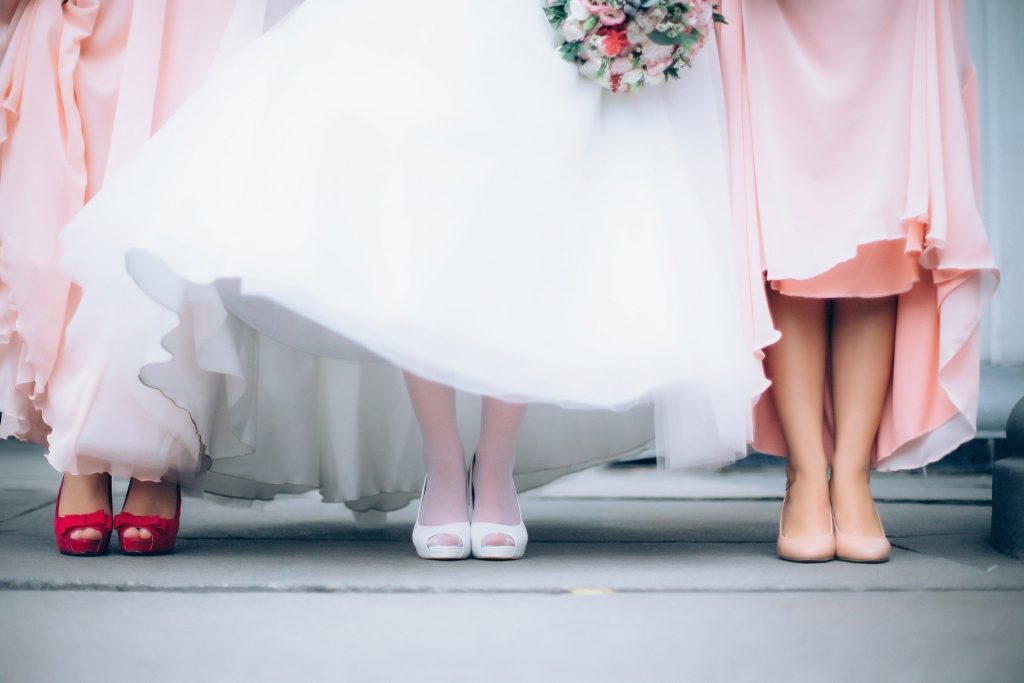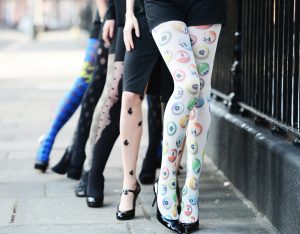It’s that ‘d’ word again! Whether you are a seasoned wearer of tights, like The Duchess of Cambridge, or just wear them on special occasions, you no doubt have seen the word denier on hosiery packaging. However, the manufacturers fail to explain what this word actually means or how important it is to you, the consumer. Without understanding denier, it’s almost impossible to know which tights to buy for what occasion.
It is just as important to know and understand the fibre content of your tights, but we will cover that in another blog post. For now we hope to uncover The ‘Hole’ Truth and explain exactly what denier means, so your next purchase of tights will be a more informed, and, stress-free experience.
So, what does this term ‘denier’ mean? In simple terms, denier is a unit of measurement that expresses the fibre thickness of individual threads in fabric and textiles, but it’s also a bit more specific than that. If you are not big on the technical stuff you can skip this next paragraph, but those of you who enjoy facts and figures, read away …
A denier as a unit of measurement equals one gram of mass per 9,000 meters of length.
Wait, what?
In other words, if you were to gather up 9 kilometers (9,000 meters) in length of a given thread to weigh, that weight (in grams) would equal the denier of that thread. For reference, it’s helpful to know that denier is based on a natural source: a single strand of silk is approximately one denier; a 9,000-meter strand of silk weighs about one gram.
Denier is usually abbreviated with a lowercase letter ‘d,’ or ‘den’ on your tights packaging, so a fabric with a 50-denier thread will read ‘50d’ or ‘50 den’.
Fabrics with a high denier count tend to be thick, sturdy, and durable. Fabrics with a low denier count tend to be sheer, silky and delicate. So to put it in simple terms, the higher the denier the thicker the fabric!
Tights come in either sheer or opaque and are available in a wide range of colours and finishes. Tights with a denier of 20 or less are referred to as sheer tights or nylons. These offer light sheer leg coverage and tend to be less durable. Opaque tights begin at around 30 denier and will generally be more rugged and long lasting.
Sheer tights are generally worn for shorter periods such as special events or occasions. They are added to an outfit for impact, and/or tradition rather than for their practicality or warmth. They enhance and elongate the legs.
Opaque tights can be worn for longer periods of time. They are more durable and offer warmth and protection while covering any imperfections. Further terms that you will come across are ultra sheer, semi-sheer and semi-opaque. These are the exceptions to the rule.
Henry Holland designs are renowned for being fashion-forward and his House of Holland, for Pretty Polly tights often feature a combination of sheer and opaque fibres. Always handle the sheer sections with extra care, as these parts will be more delicate than the opaque sections. If possible, wear hosiery gloves when putting on/taking off your tights.
So now let’s go through some examples and show you what they look like …
- 10 Denier
Ten denier tights offer a sheer ‘natural’ look and, especially if worn in a skin-toned colour, give a flawless appearance. But on the downside, they tend to hole and ladder (when the hole unravels and develops ladder-shaped holes up and down your tights) very easily. White 10 denier hosiery is popular for brides, while skin toned tights look amazing with pretty summer floral dresses and black worn with elegant evening wear and heels gives a polished, elegant look.

- 20 Denier
Twenty denier tights offer more protection than 10d, and, although remaining sheer in appearance, they will also hide imperfections. They are also more ladder-resistant, so can be worn for longer periods of time, and are a good choice for the office, or those early summer BBQs. Opt for a matt finish to wear at the office, but go with gloss for outdoor and evening events. Twenty denier is another good option for bridal hosiery, with ivory being a popular colour choice.

- 40 Denier
Forty denier tights are basically opaque but show just a hint of skin. They offer good leg coverage, and are more durable than sheer tights. They also help slim the thighs if pairing with a mini skirt or shorts. Forty denier tights are great for every day wear, so again good for the office, and outdoor activities. Perfect for those in between seasons; late summer to late autumn and spring. You can dress them up or down. A wardrobe staple.

- 60 Denier
Sixty denier tights are totally opaque and will keep you warm allowing you to wear skirts and dresses in the cooler weather. They are versatile and durable. Team black opaques with your LBD (little black dress) and black boots. Add interest by wearing gloves and a scarf in an on-trend colour, and top with matching check coat. Sixty denier tights also look great when worn under ripped jeans. They keep the cold out by covering up what would otherwise be patches of exposed bare skin! Have fun and experiment using different colour combinations.

- 80 Denier
Eighty denier tights are thick and warm. They are very hard wearing and a must for those chilly winter days and nights. Thick tights are more slimming and sleeker. To keep them looking classy match them either your shoes and/or dress, skirt colour. They enhance the look of boots and heels. Due to their opacity they also allow you to skip shaving your legs – bonus! For city dwellers black opaque tights are a winter wardrobe staple.

- 100 Denier
One hundred denier tights are the perfect foundation for winter outfits. They are super warm, totally opaque and extremely durable. Wash and wear them over and over again with confidence. However, we would recommend that you always hand wash them using Hosiery Mate. If you must machine wash pop them in a delicates wash bag, add Hosiery Mate and use the gentle wash option on your machine. Doing this will help extend the life of your tights.
We hope this information has been useful. Just keep in mind the ‘L’ower the denier the ‘L’ighter the fabric, making it sheer in appearance, less durable and more inclined to snag, tear, hole and ladder. The ‘H’igher the denier the ‘H’eavier the fabric, making it more robust, thicker, warmer and opaque in appearance.
So there you have it – denier explained! We have listed the more popular grades of denier fabric weights. You can also buy tights with a grade less than 10 denier, and at the other end of the scale, higher than 100 denier. Unfortunately some manufacturers fail to put a denier grade on their packaging. If you are in-store check with the retail assistant or, if you are shopping on-line, enquire with the supplier/company. Remember, that due to hosiery falling into the ‘intimates’ class of clothing, you cannot return the product once the packaging has been opened. So if in doubt – ask before you buy!
Do you think this information will give you more confidence and encourage you to purchase tights more often? Let us know your thoughts and opinions in the comments section below …




